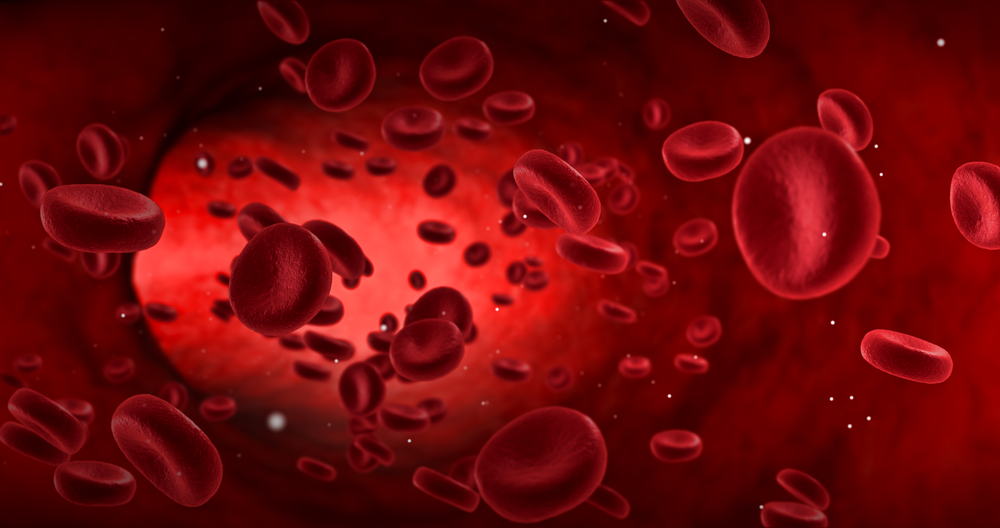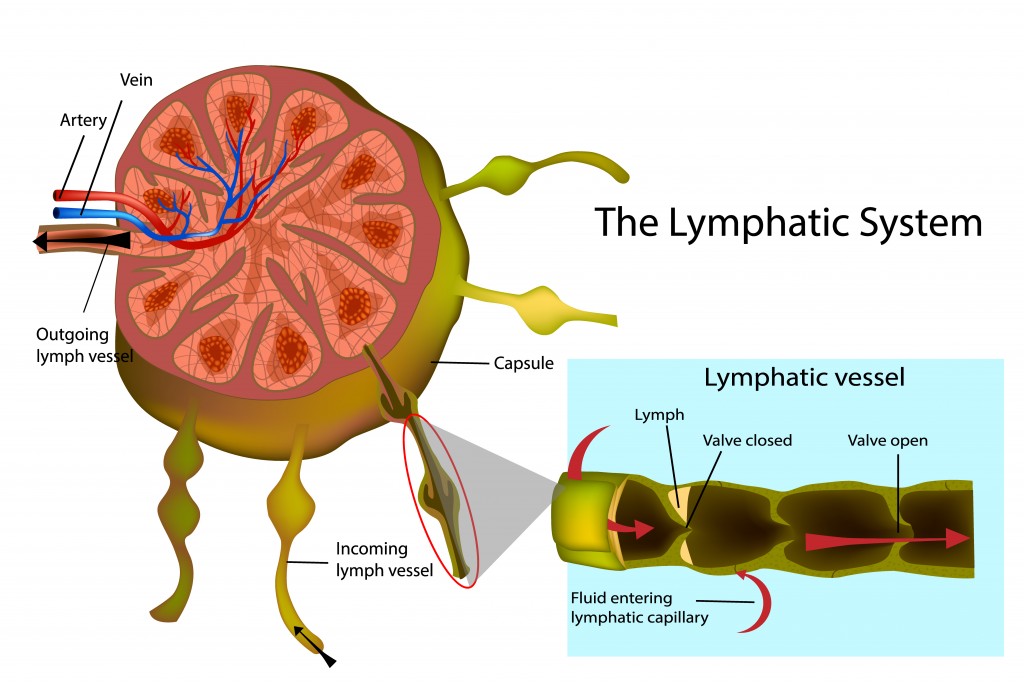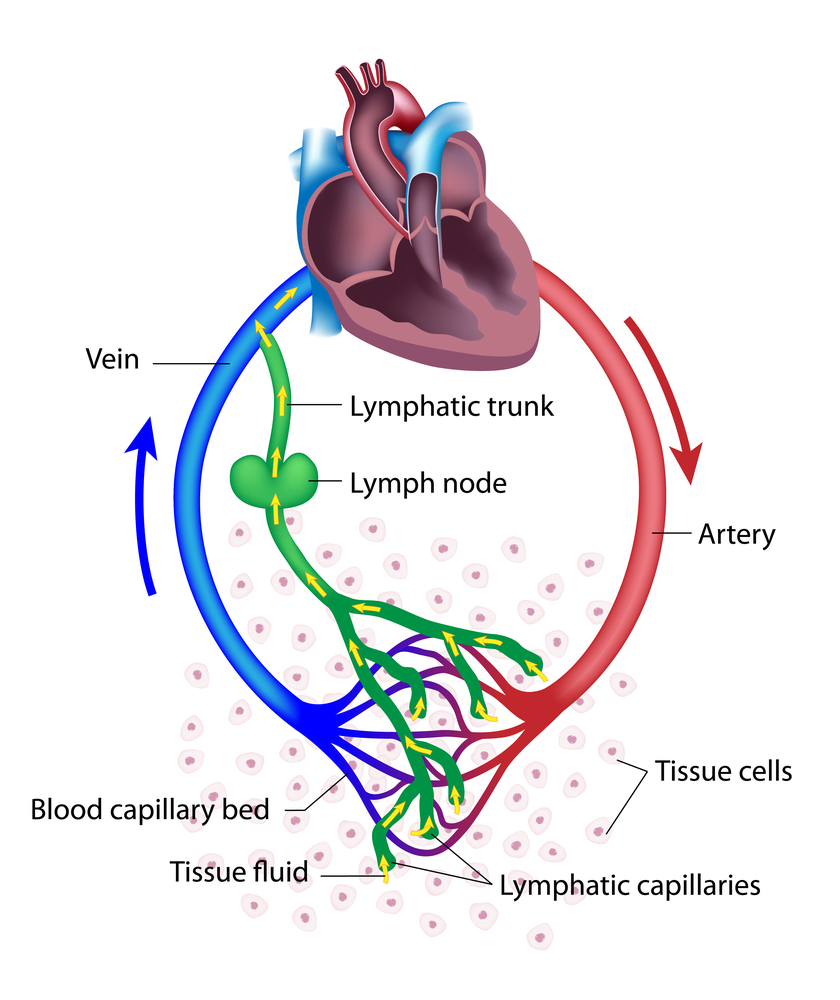Table of Contents (click to expand)
Blood circulates in a closed circuit or a closed circulatory system, wherein the pumping of blood begins at the heart. Lymph circulates in a blunt-ended linear circulatory system, wherein lymph flows from the interstitial tissue spaces into the lymphatic vessels.
Blood and lymph are two very important fluids that our bodies require for various critical functions. Although both are circulatory body fluids, they are different and should not be substituted or mistaken for the other. Clearly, if someone loses blood on the operating table, the lost blood should not be replaced with lymph! Let’s briefly look at these two bodily fluids and see how they differ from each other in terms of form and function.
Blood

Blood is a red-colored fluid flowing through our bodies’ circulatory system. A newborn has about 450ml of blood, but by the time puberty hits, that quantity of blood increases to about 5 liters. Roughly 8% of the body weight of a full-grown adult is blood. Blood flows in our body through the circulatory system, which consists of vessels like the arteries, capillaries and veins. Blood carries out many important functions in our body, including:
- Transportation of nutrients like vitamins, glucose, amino acids, and lipids to different parts of the body.
- Transportation of oxygen from the lungs to tissues, and carbon dioxide from tissues to the lungs.
- Transportation of hormones secreted by ductless glands.
- Rendering immunity through the actions of various white blood cells.
- Regulation of acid-base balance in the body.
Since blood helps in transporting essential nutrients and substances to every nook and cranny of our body, it is often referred to as the fluid of life and growth.
Also Read: What Is Blood And What Are Its Different Components?
Lymph

If blood is the elixir of life, then lymph and the lymphatic system form the drainage system of our body. While the lymphatic system does the dirty job of destroying bacteria and toxins, it is still a very important job when it comes to our overall health! Lymph is a colorless fluid found in the interstitial tissues spaces of our body. This fluid must re-join the blood circulation after completing its tasks, which happens via the lymphatic vessels and lymph nodes. About 120ml of lymph flows into the blood every hour, but before lymph joins blood in its journey, it passes through various lymph nodes, which carry out filtration of the lymph. Lymph serves several functions in our body, such as:
- Redistribution of fluid in our body.
- Returning proteins from the interstitial spaces to the blood.
- Removal of bacteria and toxins from tissue fluid before entering our blood circulation.
- Strengthening immunity by transporting lymphocytes.
If you go by what you’ve read so far, there are some evident similarities between blood and lymph. First of all, they are both are types of circulatory fluids that circulate via vessels. The second obvious similarity between the two fluids is that both help in strengthening the immunity of our body. A third similarity is that we need both to be present and on the job at all times for us to survive! Now that we’ve seen their similarities and functions in general, let’s take a closer look at the differences between blood and lymph.
Also Read: What Is The Lymphatic System?
How Are Blood And Lymph Different From Each Other?
Blood is a red-colored connective tissue in fluid form. The red color is imparted by the presence of hemoglobin in the blood. Hemoglobin contains iron, which combines with oxygen from the lungs, giving oxygenated blood its characteristic red color. Lymph, on the other hand, contains no hemoglobin and thus no red color; as a matter of fact, it is a colorless fluid.
Blood circulates in a closed circuit or a closed circulatory system, wherein the pumping of blood begins at the heart. After traveling through the body, blood is returned back to the heart, making it both the start and finish line of this circuit. Lymph circulates in a blunt-ended linear circulatory system, wherein lymph flows from the interstitial tissue spaces into the lymphatic vessels, passes through lymph nodes and enters the blood circulation.

Blood is primarily associated with the transportation of nutrients, oxygen, carbon dioxide, waste products, hormones, enzymes, etc., whereas lymph is mostly associated with the body’s defense system and helps in strengthening immunity by virtue of its basic functions. Thus, you can think of blood as a delivery man carrying essential goods to various tissues of the body, while lymph can be thought of as the middle man between tissues and blood.
Blood is composed of formed elements like white blood cells, red blood cells, platelets and a liquid element called plasma. Lymph is made up of 96% water and 4% solids. These solids include various organic and inorganic substances, as well as cellular elements, but in comparison to blood, lymph carries no red blood cells and a lesser number of white blood cells and platelets.
Blood contains fibrinogen, which helps blood clot quickly in the event of a wound. Lymph also contains fibrinogen, albeit in lesser amounts, so lymph clots at a slower rate than blood.
In general, these two circulatory system fluids, even though their systems run in a parallel manner and aid the larger function of sustainability of life, do have distinct differences. Knowing these points of differentiation helps us reach a deeper understanding of the workings of the human body.
How well do you understand the article above!

References (click to expand)
- Sembulingam K.,& Sembulingam P. (2012). Essentials of Medical Physiology. JP Medical Ltd
- Moore, J. E., Jr., & Bertram, C. D. (2018, January 5). Lymphatic System Flows. Annual Review of Fluid Mechanics. Annual Reviews.
- Choi, I., Lee, S., & Hong, Y.-K. (2012, January 25). The New Era of the Lymphatic System: No Longer Secondary to the Blood Vascular System. Cold Spring Harbor Perspectives in Medicine. Cold Spring Harbor Laboratory.
